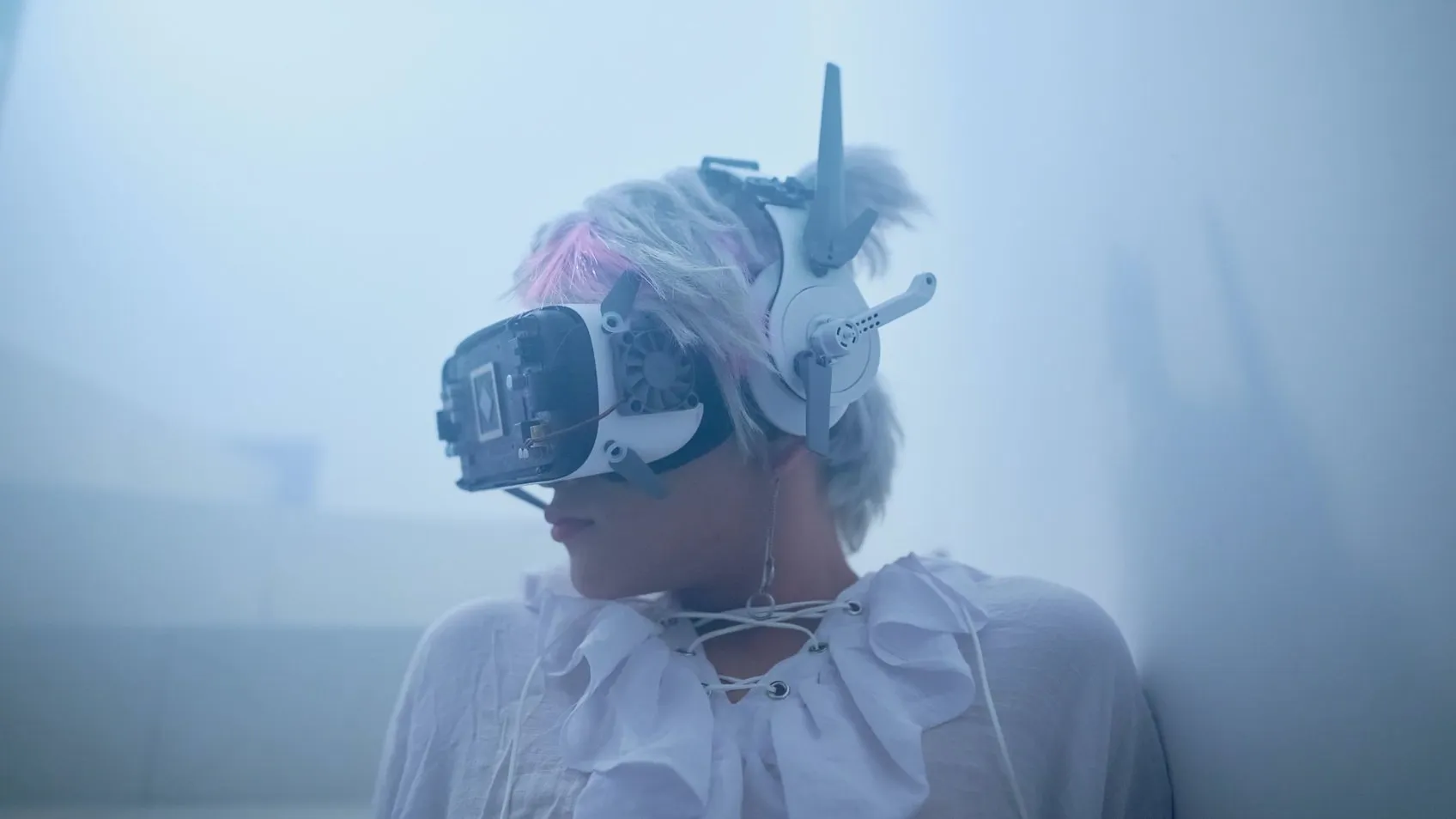Is a truly open metaverse possible?
Neal Stephenson and his team at crypto startup Lamina1 (L1) are convinced that blockchain can help bring it into fruition—and that a certain social media giant co-opted the concept of a metaverse without understanding its true meaning and intent.
Lamina 1 is a layer-one blockchain protocol co-founded by Stephenson, the author who has been widely credited as the originator of the term “metaverse” via his seminal 1992 novel Snow Crash. Peter Vessenes, an early crypto adopter who helped expose Ethereum’s early security vulnerabilities back in 2016, is also a co-founder at L1.
In an interview with Decrypt, Lamina 1 CEO Rebecca Barkin, who previously was an executive at augmented reality startup Magic Leap, shared L1’s vision for building an open metaverse leveraging crypto—and how video games deeply inspired Stephenson’s metaverse vision.
“The vision that Neal had laid out a long time ago for an open metaverse," Barkin said, "drew inspiration from gaming."
Corporate control
Barkin explained that Stephenson and L1 want to create an open, high-fidelity metaverse—so forget floating cartoon characters without legs and “walled garden” games that don’t allow users to take their assets with them to other virtual spaces.
While Barkin admitted that popular proto-metaverse games like Roblox don’t “need” crypto, such platforms are far from decentralized as Roblox retains full control over user accounts and locks purchased digital assets within its ecosystem.
“That’s part of the thing we’re trying to get away from,” Barkin said of Roblox’s approach. “We have to build the right infrastructure underneath [the metaverse] to enable interoperability and identity to move with you, and ownership of digital assets to move with you—versus being reliant upon a corporation to keep that game up, hold onto your identity, and hold onto your values.”
Barkin said that Lamina1—which is preparing to launch its mainnet this summer—also takes issue with Meta’s approach to “the metaverse” and VR.
“Facebook, in their rebrand to Meta, commandeered a term that didn’t make a whole lot of sense for them to be using,” Barkin said. “It was frustrating to the lot of us that this term had sort of been commandeered by a company that didn’t share, or didn’t have a lot of the same values that we wanted to encourage in the development of the metaverse.”
It’s worth noting that Meta tried to take an “open metaverse” stance in late 2022, in which CEO Mark Zuckerberg touted interoperability, but it remains unclear how exactly and whether Meta would take such an approach.
Meta also pushed for a hardware-heavy metaverse approach that Barkin argued people don’t want.
“When they came out and kind of pushed a vision of the world where we were all wearing headsets full-time to work, play, and communicate, it just was so far,” Barkin said. “It was going really, really far, really fast for most people. And the truth is, most people don’t want to wear a headset all day long.”
Forging alliances
But is an open metaverse possible under capitalism, while tech and gaming firms like Meta, Microsoft’s Xbox, and Sony’s PlayStation push for exclusivity deals for major games and apps to incentivize product sales?
Lamina1 is working with companies like HTC and Qualcomm that it says shares its “open metaverse” vision. L1 announced this week that it will be joining Qualcomm’s Snapdragon Spaces XR developer platform, and will also be working with infrastructure firm Croquet.
HTC’s Viverse, which offers numerous user-generated virtual experiences, was a main point of appeal for L1, which began working with the XR hardware firm back in January.
“They said, ‘People are not the product,’” Barkin shared of HTC. “And we lost a lot of that in tech in the last 15 years.”
Earlier this year, HTC announced that it would use L1’s blockchain for “cross-world, cross-platform asset distribution,” allowing players to keep their digital assets with them for use across multiple games and experiences.
Now, Lamina1 and AI gaming firm Interverse are developing XR sports experiences with HTC, with a focus on “interoperable assets.” In the 3D sports-branded world, players will be able to appear as mascots from eight different European soccer clubs, like Portuguese football club S.L. Benfica’s bald eagle Águia Vitória, for example.
Hyperrealistic experiences
Barkin also said that Lamina1 is working with metaverse firm Mira to create experiences for users.
“They have city-scale, combined VR tourism, ecommerce, [user-generated content] games that can be put into these worlds in this framework that they're building," Barkin explained, "and it's all underpinned with blockchain."
“What was really exciting to us about it is that for a very long time we've been talking about—and Neal's really passionate about this, as well—photorealistic, high-fidelity experiences in VR and AR," Barkin added. "It's been hard to date to get to that level."
As Lamina 1 fights for an open metaverse with its new collaborators in Mira, Qualcomm, HTC, Interverse, and Croquet, its metaverse platform could rival some of the biggest names in tech and gaming. We'll see whether that open ecosystem ethos remains intact and is broadly adopted by other builders as the metaverse takes hold, however.
Editor's note: The headline was updated after publication to more accurately reflect the content of the article.
GG Newsletter
Get the latest web3 gaming news, hear directly from gaming studios and influencers covering the space, and receive power-ups from our partners.

